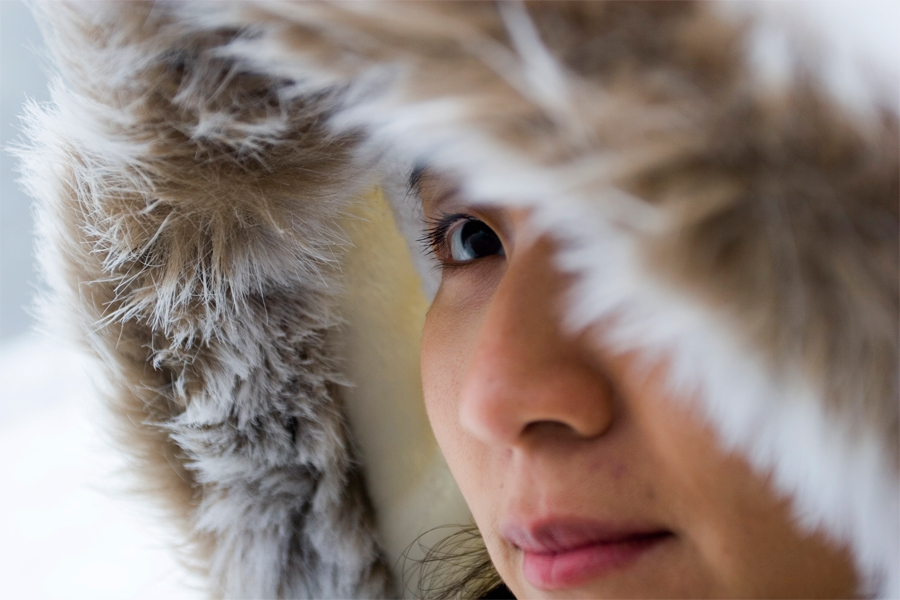
Inclusive growth is more than jobs and GDP
It is about dignity and quality of life through self-determination and sustainable livelihoods.
In a world shaken by the pandemic crisis and social inequality, many voices are now calling for
measures to build a more inclusive society and economy. In Canada’s North, Inuit have been
developing their own vision of inclusive growth, one where they share the same quality of life as
all Canadians. Inclusive growth is more than jobs and GDP. It is about dignity and quality of life
through self-determination and sustainable livelihoods.
Stark inequalities persist across Inuit Nunangat, the Inuit homeland that spans the Inuvialuit
region (in the Northwest Territories), Nunavut, Nunavik (in Northern Quebec), and Nunatsiavut
(in Labrador). Lower Inuit participation in the wage economy only partially explains these
inequalities. After taxes, the median Inuit worker takes home only $39,317, while the median
non-Inuit worker takes home $80,815. This is in large part because of the overrepresentation of
Inuit in low paying jobs.
Education gaps partially explain the gaps in income. High school and post-secondary graduation
rates of Inuit have improved over the last 20 years. But progress on education is still not keeping
pace with the non-Indigenous population. And education is only one factor in inclusive growth for
Inuit. Factors such as health and well-being, social inclusion, and cultural integrity also
contribute to higher employment rates for Inuit. It is these measures that largely make up the
Inuit vision of inclusive growth.
The Inuit vision of inclusive growth looks beyond employment in the wage economy. In the
traditional Inuit economy, sustainable livelihoods are also important. For Inuit, a livelihood is
more than what you get paid to do. Participation in the traditional economy through harvesting
and handicraft activities remains strong. And it is strongest in Inuit Nunangat, where 84 per cent
of Inuit participated in some form of traditional activities in 2017. The traditional economy creates
economic, social, and cultural value. It also continues to evolve as a source of local innovation and
inspiration. For example, the Qikiqtani Inuit Association (QIA) in Nunavut speaks of a new
economy for Inuit. A conservation economy that builds on traditional economic activities to create
livelihoods and wealth from local natural resources while strengthening cultural and social
capital.
The conservation economy is explored in Conference Board research on inclusive growth in Inuit
Nunangat. The initial focus is on Nunavut’s evolving sheries sector. Inuit aspirations for the
industry point to its potential for creating local wealth and livelihoods, as well as broader social
impacts such as food security and cultural renewal. This is an exciting Inuit vision of what an
inclusive economy could be.
Twenty years ago, Nunavut’s limited oshore quotas were harvested by southern vessels
employing a handful of Inuit. Today, four Inuit companies own and operate multiple vessels,
controlling 52 per cent of quotas in adjacent waters. They employ hundreds of Inuit annually. In
2019, their eorts in this emerging sector contributed an estimated $112-million to Nunavut’s
economy. And we have only begun to understand the cultural and social capital created by the
industry.
Nunavut’s unique shery has evolved over the last 20 years. Federal and territorial governments
along with Inuit organizations, Nunavut’s Inuit-owned shing companies, and the Nunavut
Fisheries and Marine Training Consortium (NFMTC) have all played important roles as partners.
NFMTCs has had a central role in advancing the Inuit vision of inclusive growth. This includes
local training opportunities tailored to community values and industry needs. Yet this vision
continues to be a work in progress, and there is more for all partners to strive for. Inuit
employment in the industry has increased over the last 20 years, but only 40 per cent of crew are
Inuit. And Inuit are overrepresented in entry level and lower paying positions.
The challenge of inclusive economies is to ensure that economic growth serves bigger purposes—
purposes such as developing sustainable livelihoods, respecting and preserving culture, and
improving socio-economic equality. What we will learn over the coming years through exciting
new initiatives across Inuit Nunangat should be of interest to everyone.




